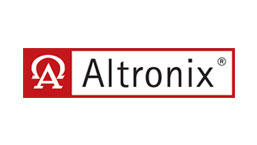Standards Overview
Alarm Systems serve the public interest by providing alerts of threats to life and property and initiating proper responses to those emergencies. Because of the critical nature of these systems, it is vital that these systems be installed, monitored, and serviced in a manner that will assure they accomplish their public safety function.
With wide variations in the capabilities of alarm companies, there is a need for ensuring consistency of installation and service. The best method of ensuring alarm systems accomplish their public safety function is through the use of standards.
Standards are seen as minimum requirements that can be used to regulate various elements of the provision of alarm services. Standards guide regulators as to what requirements should be imposed on providers of alarm services and how alarm systems should be inspected.
There are many types of standards that can be used depending on the regulator’s needs. Standards exist for alarm equipment, installation, monitoring, and service. Additional standards are being developed to address both false alarm reduction and licensing for operation of alarm monitoring organizations.
Because of the vital role standards play, it is important to develop them with a disciplined process. The American National Standards Institute (ANSI) is an organization of standards writers that coordinates the development of voluntary consensus standards. Standards developed through the ANSI process are assured of having broad input from a variety of stakeholders and a consensus decision making process to finalize the standard.
Participating stakeholders for alarm system standards include regulators, manufacturers and installers of alarm systems and the conformance assessment agencies UL and FM. The writing of accredited standards are sponsored by various organizations including the National Fire Protection Association (NFPA) and private sector alarm industry associations such as the Central Station Alarm Association.
Standards benefit regulators by providing a high quality guide for use in setting local standards. They can be seen as both fair and effective because they are developed by a consensus process. Standards also protect regulators against litigation because an industry accepted standard was utilized.
Standards benefit purchasers of alarm systems by providing assurance that their alarm system meets minimum requirements. Standards can provide businesses reasonable assurance that they are taking prudent precautions to provide safety and security for employees and visitors.
For the alarm industry, standards enhance its overall image by assuring all participants will install, monitor, and service to a minimum standard, which opens the markets to all by promoting, fair competition.
Although a broader community develops standards, their implementation is dependent on regulators to assure the proper installation and ongoing service of alarm systems. Regulators can be local public fire officials, public safety officials, the insurance industry, and others.
The broad use of accredited standards by regulators provides protection and assurance to customers who purchase alarm systems. Implementing standards that are developed by a consensus making process assures the validity of the standard. The use of standards will raise the level of alarm services, benefiting all participants.










